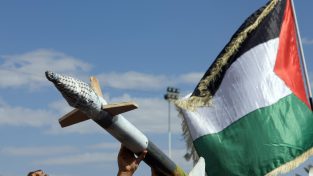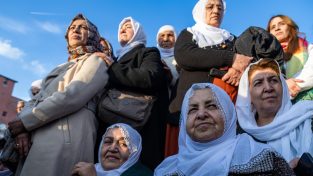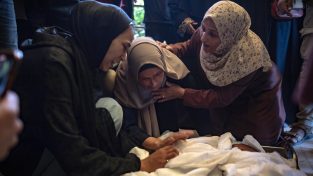Giornata internazionale contro i test nucleari
La Giornata internazionale contro i test nucleari è stata creata il 2 dicembre 2009 con l'adozione unanime della risoluzione 64/35 dell'Assemblea Generale delle Nazioni Unite, in seguito ai numerosi sviluppi a livello governativo, ai movimenti nella società civile e agli sforzi del Segretario Generale. Dalla sua istituzione, questa Giornata internazionale ha contribuito, insieme con altri eventi e azioni, a creare un ambiente globale con prospettive più ottimiste verso un mondo libero dalle armi nucleari
Si celebra quest’oggi, 29 agosto, la Giornata internazionale contro i test nucleari, promossa dalle Nazioni Unite a partire dal 2009 e che punta a porre fine ai test su questo tipo di armi per scopi tanto civili che militari. Dal primo test atomico, svolto nel sito Trinity il 16 luglio 1945 dagli USA come preparazione alle bombe poi lanciate su Hiroshima e Nagasaki, ne sono stati effettuati più di 2.000 complessivamente. Agli albori dei test atomici non si teneva conto dei loro effetti devastanti sulla vita umana, né tanto meno dei pericoli del fallout nucleare dei test atmosferici. Il senno di poi e la storia ci hanno mostrato gli effetti terrificanti e tragici dei test sulle armi nucleari su persone e ambiente, perché non è possibile effettuare un controllo completo e considerando che oggi le armi nucleari molto più potenti e distruttive dei primi ordigni atomici. La International Campaign to Abolish Nuclear Weapons (ICAN, Premio Nobel per la Pace 2017, di cui anche Rete Pace Disarmo e Senzatomica – promotrici di “Italia, ripensaci – fanno parte) ha evidenziato il “costo umano” dei test nucleari raccogliendo documentazioni e testimonianze delle vittime. Gli esperimenti condotti in varie parti del mondo (Kazakistan, Algeria, Stati Uniti, Isole del Pacifico…) hanno avuto come risultato epidemie di tumori e altre malattie croniche. Senza dimenticare come ampie porzioni di territorio rimangono radioattive e non sicure per la presenza umana anche decenni dopo la chiusura dei siti di sperimentazione. Le vittime di questi esperimenti tossici non devono essere dimenticate e le loro richieste di giustizia e assistenza devono essere soddisfatte.
Il 2 dicembre 2009 la Sessione dell’Assemblea generale delle Nazioni Unite ha dichiarato il 29 agosto Giornata internazionale contro i test nucleari, adottando all’unanimità la risoluzione 64/35. La risoluzione chiede di aumentare la consapevolezza e l’educazione “sugli effetti delle esplosioni di test di armi nucleari o di qualsiasi altro tipo di esplosione nucleare e sulla necessità della loro cessazione come uno dei mezzi per raggiungere l’obiettivo di un mondo libero da armi nucleari”. La risoluzione è stata promossa dalla Repubblica del Kazakistan, insieme a un gran numero di sponsor e cosponsor, per commemorare la chiusura del sito di test nucleari di Semipalatinsk il 29 agosto 1991.
In occasione della Giornata 2023 il Segretario Generale delle Nazioni Unite Antonio Guterres ha dichiarato: “Nella Giornata internazionale contro i test nucleari, il mondo parla con una sola voce per porre fine a questa eredità distruttiva. Quest’anno ci troviamo di fronte a un allarmante aumento della sfiducia e delle divisioni a livello globale. In un momento in cui quasi 13.000 armi nucleari sono stoccate in tutto il mondo – e i Paesi stanno lavorando per migliorarne la precisione, la portata e il potere distruttivo – questa è una ricetta per l’annientamento dell’umanità. Un divieto giuridicamente vincolante sui test nucleari è un passo fondamentale nella nostra ricerca di un mondo libero da armi nucleari. Il Trattato sulla messa al bando totale degli esperimenti nucleari (CTBT), sebbene non sia ancora in vigore, rimane una potente testimonianza della volontà dell’umanità di sollevare l’ombra dell’annientamento nucleare dal nostro mondo, una volta per tutte. In nome di tutte le vittime dei test nucleari, invito tutti i Paesi che non hanno ancora ratificato il Trattato a farlo immediatamente, senza condizioni. Poniamo fine ai test nucleari per sempre”.
Da Rete pace e disarmo






















